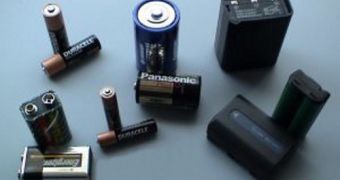Researchers at the Massachusetts Institute of Technology (MIT) have just recently set forth a bold, new idea, that of a battery made from materials that are so effective that they would recharge more than 100 times faster than the most advanced lithium-ion cells. In other words, they say, a battery that usually powers a cell phone could be recharged within a matter of seconds, rather than hours. Ten seconds, to be more precise, according to MIT estimates.
“The ability to charge and discharge batteries in a matter of seconds rather than hours may open up new technological applications and induce lifestyle changes,” Gerbrand Ceder and Byoungwoo Kang, both materials scientists at the prestigious Institute, write in the Wednesday edition of the famous scientific journal Nature. The basic principle that stands at the base of the innovation is very simple – the researchers coated the existing lithium ion phosphate material with a special substance that accelerated the flow of ions around the solid core.
This means that the batteries employing this system will have the ability to recharge at unfathomable speeds, on account of the fact that it creates a “fast lane” of sorts for ions. But there are a few problems that remain, even though the battery has a remarkable ability of delivering electrical current. Physicists fear that the large amount of current that will be rushed into it within a very short timeframe might drastically shorten the device's life span.
“High current means lots of heating. If you have high temperatures, you have to ask the question, are you detrimentally affecting the life of the battery? The answer is that it's going to shorten the life,” National Renewable Energy Laboratory scientist Rob Farrington, from the Advanced Vehicle Group, stresses. The Nature paper has only presented the research of the MIT team after 50 charges/discharges, yet their battery has showed no signs of decay. This is a very good signal and all that remains is that the new method of construction be tested more thoroughly.
The only thing that could stand in the way of these new batteries hitting the shelves is the cost that may be associated with producing these devices on a larger scale. If these difficulties are overcome, then we could enjoy the same battery life, but with only a tiny fraction of the reloading time.

 14 DAY TRIAL //
14 DAY TRIAL //